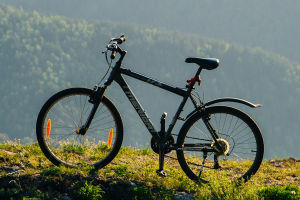When you are just starting to learn a new punching combination, your best bet is probably to practice with empty strikes until you are familiar with the movement. This one will help you prevent injuries in case you sandbag the exercise with an incorrect punching style.
However, switching to sandbagging after perfecting a technique is the best way to train as it will help you develop strength and further refine your technique.
What are the benefits of sandbag training?
One of the biggest and most obvious benefits of sandbag training is that it can increase forearm, wrist, and overall punching power. An added benefit is that you can perform sandbag exercises every day for as long as your hands and muscles can adapt.
With this in mind, choosing to perform sandbag training as part of your training can have three benefits.
1. Effective striking practice
Hitting air strikes is great for your technique, but putting punches in the sandbag more realistically simulates a real live sparring session.
Because you don't have any feedback, it's hard to tell if you've landed the right blow when you throw a punch. You don't want to hurt yourself and you feel that air strikes can give you a sense of effective punching strikes
When you're swinging in the air, it's impossible to know if you've mastered the punching technique. Hitting an object, such as a sandbag, can help you practice precisely to your sense of striking and strengthen your power.
2. More difficult workouts
Sandbagging can bring extra cardio and strength training into your workout.
It is difficult to increase punching power through air strikes alone. While the benefits of sandbagging are many, increasing the resistance to punching through is the greatest.
Hitting a heavy sandbag with your fist will build up your arm muscles and make you work harder throughout the exercise. When you strike a sandbag, the muscles in your arms, shoulders, chest, back, and legs are all more active than when you strike an air strike.
3. Improved balance and coordination
One of the often untold benefits of hitting the sandbag is that over time you will improve your balance and coordination.
You can control your balance when hitting air strikes, but you lose that control when you throw punches at the sandbag. For example, if you use a suspended sandbag and throw a straight front-hand punch followed by a straight backhand punch, you need to take into account the sway of the sandbag.
In addition, the sandbag has a defined area that you will aim at when you throw your punches. Practising with the sandbag will help you to better practice your coordination and enhance your accuracy when throwing punches.
A few points, in particular, to emphasize when sandbagging for novices.
1. Protect your wrist, otherwise, it is easy to sprain your hand when hitting the sandbag. Of course, we saw that many of the club's best players didn't hit the bag in this way, so it's probably a basic requirement to protect newbies. Also, don't forget to wear gloves, it's safer than not wearing them.
2. Power is mainly in the front range, the back range should be properly relaxed arm to avoid reducing the speed of the punch, if the whole process has been using a lot of power, the movement will be very stiff. Don't push it too long after hitting the sandbag, according to our coach, "Don't push it", because many newcomers like to "push" the sandbag.
3. Whole body coordination: Every time you throw a punch, you must pay attention to the whole body, because although the punch is thrown by the arms, the power comes from the whole body, especially the rotation of the legs and waist.
1. Defence: Don't close your eyes, keep your jaw down and your hands up.
2. Breathing: Always exhale when striking, this is the sound that you see in many training videos when you want to spit out your mouth, this is a mistake that many novices make at the time, often not breathing at the moment of throwing a punch, this is very bad, not only is it not easy to keep your strength, but it can also hurt your lungs.
3. Footwork: Always move your feet. Also when training, if the speed, power, and balance of the punch cannot be met at the same time, priority should be given to the balance of the body.


